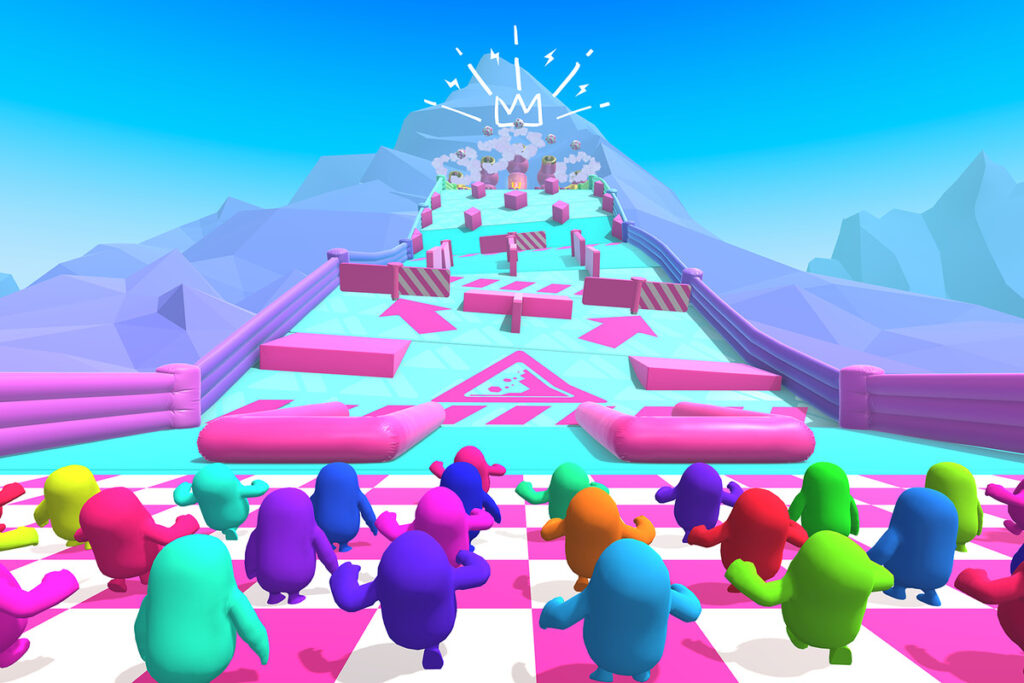March 22, 2024
Remember when gaming wasn’t just about pixels and polygons but about community, camaraderie, and the thrill of the new? As we dive into the gaming trends of 2024, it’s hard not to feel a pang of nostalgia for the fads that once defined our gaming experiences.
From augmented reality adventures to late-night LAN parties, here’s a trip down memory lane as we reminisce about the top 5 gaming fads we dearly miss.
Among Us (2020 – 2022)

While Among Us is still relatively popular, it used to be the game everyone was playing. In 2020, when the world was shut down due to travel restrictions, gamers and non-gamers turned to Innersloth’s social deduction game to kill time.
Eventually, the Indie game became a worldwide sensation, resulting in 10-stack lobbies of friends spending hours and hours on Discord, chatting and voting out the “sus” friend. The game created a whole new culture in gaming, a language, trend, and memes that are still alive.
Fall Guys (2020 – 2021)

Fall Guys surged in popularity as a gaming fad, captivating a global audience with its vibrant visuals and fast-paced challenges. Featuring quirky jellybean avatars navigating obstacle courses, it became a cultural phenomenon, attracting players of all ages.
Its accessible gameplay and emphasis on multiplayer mayhem made it a staple for casual gamers and content creators alike. However, as with many trends, its popularity eventually subsided, although it left a lasting impact on the gaming community, showcasing the power of simple, enjoyable gameplay experiences in an increasingly complex industry.
Dance Dance Revolution (DDR) (Late 1990s – 2000s)
Maybe it is a bit of an unconventional gaming trend, but DDR is a must-mention here. Who could forget the sensation that was Dance Dance Revolution? DDR was the ultimate party starter in the late 90s and early 2000s, combining physical activity with addictive gameplay.
Whether you were a seasoned pro or a complete novice, something was undeniably exhilarating about busting a move to your favorite tunes with friends by your side. DDR provided a fun way to stay active and fostered a sense of competition and camaraderie among players. From friendly dance-offs to heated tournaments, DDR brought people together to pursue rhythmic glory.
LAN Parties (1990s – Early 2000s)
Before online multiplayer became the norm, there were LAN parties – epic gatherings of gamers armed with their trusty PCs and a thirst for victory. From cramped basements to makeshift gaming dens, LAN parties were where friendships were forged, rivalries were born, and memories were made.

There was something undeniably special about the camaraderie of huddling around a screen with your fellow gamers, snacks at the ready, and adrenaline pumping. LAN parties provided an opportunity to showcase your gaming skills and fostered a sense of community and connection among players. From marathon Quake sessions to intense Counter-Strike matches, LAN parties were the ultimate test of skill and strategy.
Arcade Culture (1980s – 1990s)
In the 1980s and 90s, arcades were more than just gaming hubs—they were cultural meccas where players of all ages could escape to fantastical worlds and test their skills against the best of the best. Whether you were gobbling up ghosts in Pac-Man or throwing down quarters in Street Fighter, the arcade was where dreams came alive, and legends were born.
Arcade culture provided an escape from the mundane realities of life but also fostered a sense of wonder and excitement among players. From the thrill of discovering a new game to the satisfaction of achieving a new high score, arcades offered a unique gaming experience that left an indelible mark on those who frequented them.
As we reflect on these gaming fads of yesteryear, it’s clear that they were more than just passing trends – they were moments frozen in time, forever etched into the fabric of gaming culture.